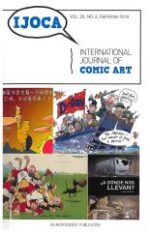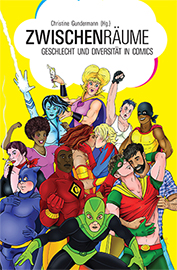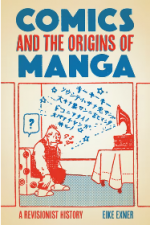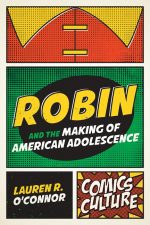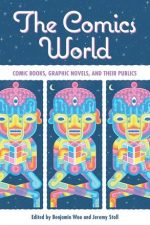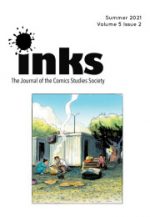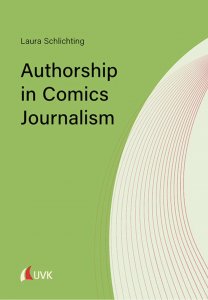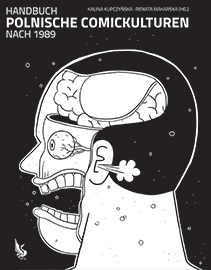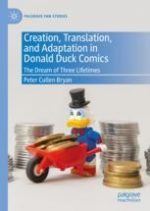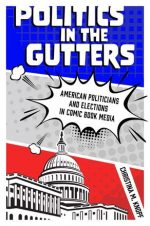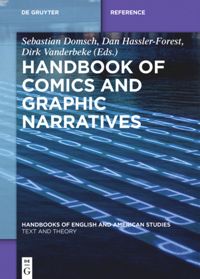Der Zeitschriftenmonitor ist eine Unterkategorie des Monitors. Hier werden in unregelmäßigen Abständen kürzlich erschienene Ausgaben und Artikel internationaler Zeitschriften zur Comicforschung sowie Sonderhefte mit einschlägigem Themenschwerpunkt vorgestellt. Die Ankündigungstexte und/oder Inhaltsverzeichnisse stammen von den jeweiligen Websites.
Haben Sie Anregungen oder Hinweise auf Neuerscheinungen, die übersehen worden sind und hier erwähnt werden sollten? Das Team freut sich über eine Mail an redaktion@comicgesellschaft.de.
→ Zu früheren Monitoren
European Comic Art 14.2
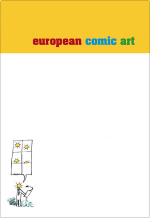 online im Abonnement
online im Abonnement
Website
- Fransiska Louwagie, Simon Lambert: “Introduction: Tradition and Innovation in Franco-Belgian Bande dessinée”
- Annick Pellegrin: “Anchoring Retro Spirou et Fantasio and Spin-off Albums”
- Cristina Álvares: “Spirou’s Origin Myth and Family Romances: The Domestication of Adventure in the New Adventure Comic”
- Nicolas Martinez: “Reframing the Western Genre in Bande dessinée, from Hollywood to Ledger Art: An Intermedial Perspective”
- Ilan Manouach: “Outlining Conceptual Practices in Comics”
Inks 5.3
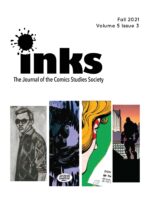 online im Abonnement
online im Abonnement
Website
- Jackson Ayres: “Writing for the Trade or Writing for a Trade?”
- Lan Dong: “Drawing Histories, Documenting Experiences: Clément Baloup’s Vietnamese Memories”
- Vincent Haddad: “Detroit vs. Everybody (Including Superheroes): Representing Race through Setting in DC Comics”
- Susan Vanderborg: “’I Tell You I Know Nothing‘: Redefining Accessibility in Sid Jacobson and Ernie Colón’s The Torture Report”
- Dale Jacobs: “The 1976 Project: On Comics and Grief, or How Our Lives Intersect with What We Study”
The Comics Grid: Journal of Comics Scholarship 11
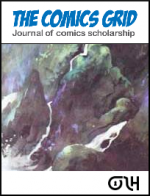 online, open access
online, open access
Website
- Anna Marta Marini: “Discursive (Re)Contruction of Mexican American Identity in J. Gonzo’s La Mano del Destino”
- Johanna Commins: “Composing the Handmaid: From Graphic Novel to Protest Icon”
- Mike Classon Frangos: “Swedish Norm-Critical Comics and the Comics Pedagogy of Lynda Barry”
- Chris Reyns-Chikuma: “Beyond the Two Solitudes: Differences in Fluidity in Franco-Canadian BD and Anglo-Canadian Comics Through the Influence of Manga”
- Alessandro Scanu: “How to Tell a Story without Words: Time and Focalization in Shaun Tan’s The Arrival (2006)”
- Niels Høegh Madsen, Mathias Stengaard, Maria Jose Schmidt-Kessen: “The Visualized Employment Contract. An Exploratory Study on Contract Visualization in Danish Employment Contracts”
Journal of Comics & Culture 6
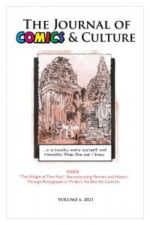 online im Abonnement
online im Abonnement
Website
- Joshua A. Kopin: “’A Big Hit Wit’ Each Oter‘: Techniques of Belonging and Identification on Hogan’s Alley”
- Mark R. Martell: “From Invisible to Invincible: Asian American Superheroes in Comics”
- Isabelle Martin: “’The Weight of Their Past‘: Reconstructing Memory and History Through Photographs in Thi Bui’s The Best We Could Do”
- Ioana Atanassova: “Superman: The Kryptonian-American Immigrant”
- Matt Reingold: “International Migrations in Asaf Hanuka’s Ha Yehuda Ha Aravi”
- Erika Chung: “Somewhere in Between: Asian Diaspora, Superhero Comics and Identity”
Sane: Sequential Art Narrative in Education 2.6
 online, open access
online, open access
Website
- Oliver McGarr, Guillermina Gavaldon, Francisco Manuel Sáez de Adana Herrero: “Using comics as a tool to facilitate critical reflective practice in professional education”
- Angelo Letizia: “Empirical Drawings: Utilizing Comic Essays in the Social Studies Classroom to Teach Citizenship”
IJOCA: International Journal of Comic Art 22.2
- José Alaniz: “Survilo and Historical Trauma in Contemporary Russian Comics”
- Marty Branagan: “Tintin: From Violent Communist-Hating Conservative to Radical Peacenik, Part 2”
- Annabelle Cone: “The Fez, The Harem Pants, and the Embroidered Tie: Fashion and the Politics of Orientalism in Three Francophone Graphic Novels”
- John A. Lent, Geisa Fernandes: “Far Out of the Box: The Comics of Chile’s Marcela Trujillo (Maliki)”
- Natsume Fusanosuke: “The Characteristics of Japanese Manga”
- Stephen Connor: “Ordinary Enemies: Robert Kanigher, Garth Ennis, and the Myth of the Unblemished Wehrmacht”
- Pritesh Chakraborty: “Re-invention of Indian Myths in the Superhero Comic Books of Nagraj”
- Christine Atchison: “Watchmen: An Exploration of Transcendence in Comics”
- Francisco Saez de Adana, Michel Matly: “The 1936-1939 Spanish Civil War and American Comics”
- John A. Lent: “Trying Times Require Re-inventiveness: Ways of Coping of Taiwan’s Ling Qun”
- Brian Cremins: “’Reoccurring Dreams‘: Music and the Elegiac Voice in John Porcellino’s Perfect Example”
- Alisia Grace Chase: “The Maternal-Feminine and Matrixial Borderspace in Megan Kelso’s Watergate Sue”
- Kosei Ono: “How Sugiura’s Ninja-Boy Comics Developed after the Asia-Pacific War”
- Aaron Humphrey: “The Pedagogy and Potential of Educational Comics”
- Jeffrey O. Segrave: “To Play or Not to Play? That Is the Question: Perspectives on Organized Youth Sports in Comic Strips”
- Peter Cullen Bryan: “An Expert on Arrow: Critical Fan Activism and Gail Simone’s Twitter”
- Andrew Edward: “Is It a Bird? Is It a Plane? It’s Jack the Ripper!”
- Safa Al-shammary: “Habibi Worth a Thousand Words, and a Few Words Worth a Thousand Tales”
- Kyle Eveleth: “Print Is Dead; Long Live Print!: Are Digital Comics Killing the Print Comics Industry?”
- Angelo J. Letizia: “Comics as a Window into Disposability: Some Thoughts”
- Mrinal Chatterjee: “Cartoons in the Time of Corona in India”
